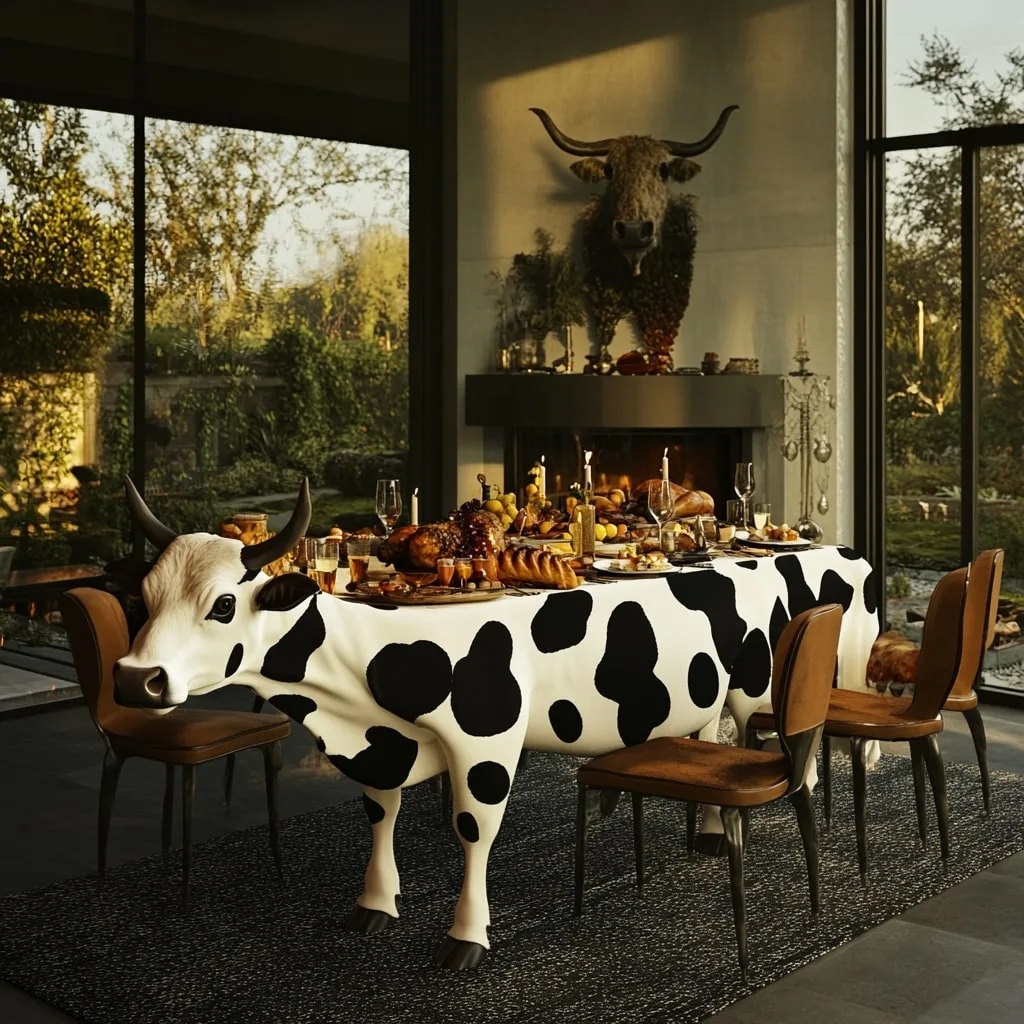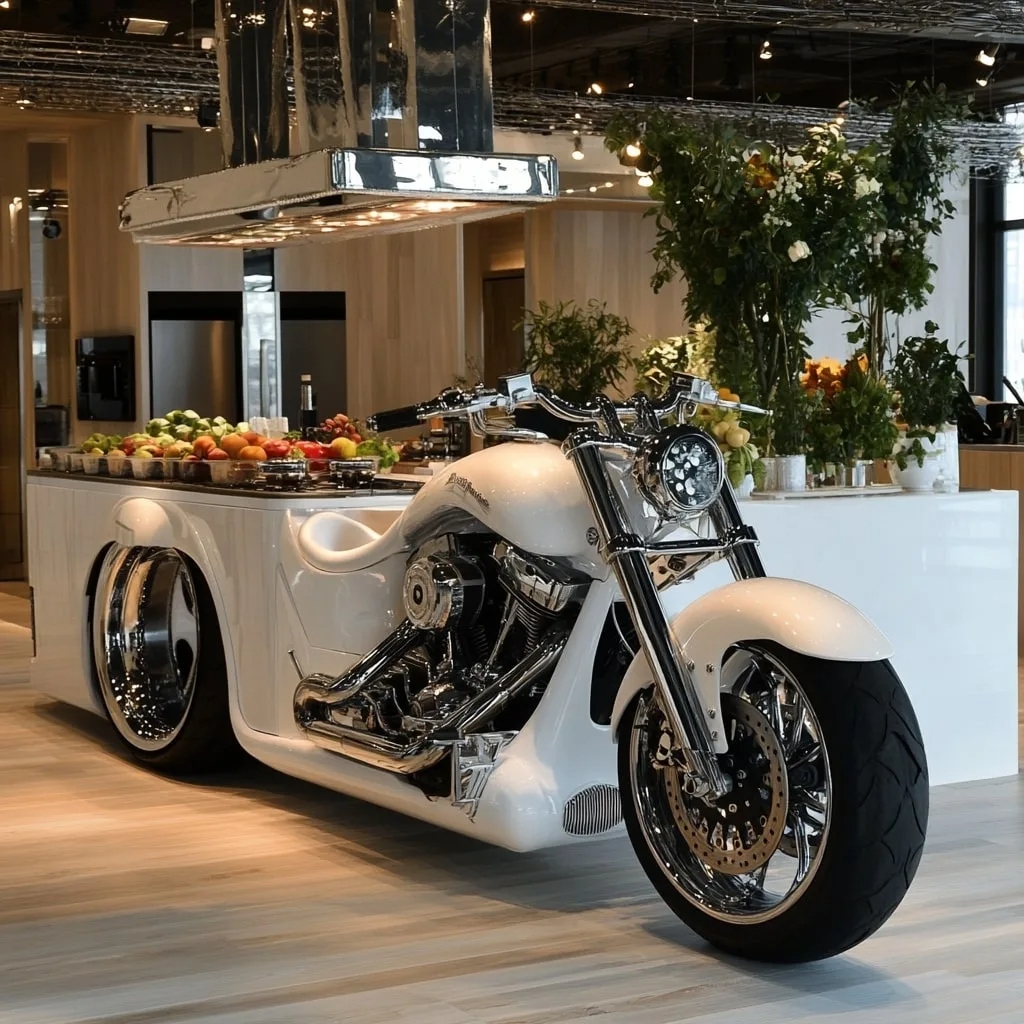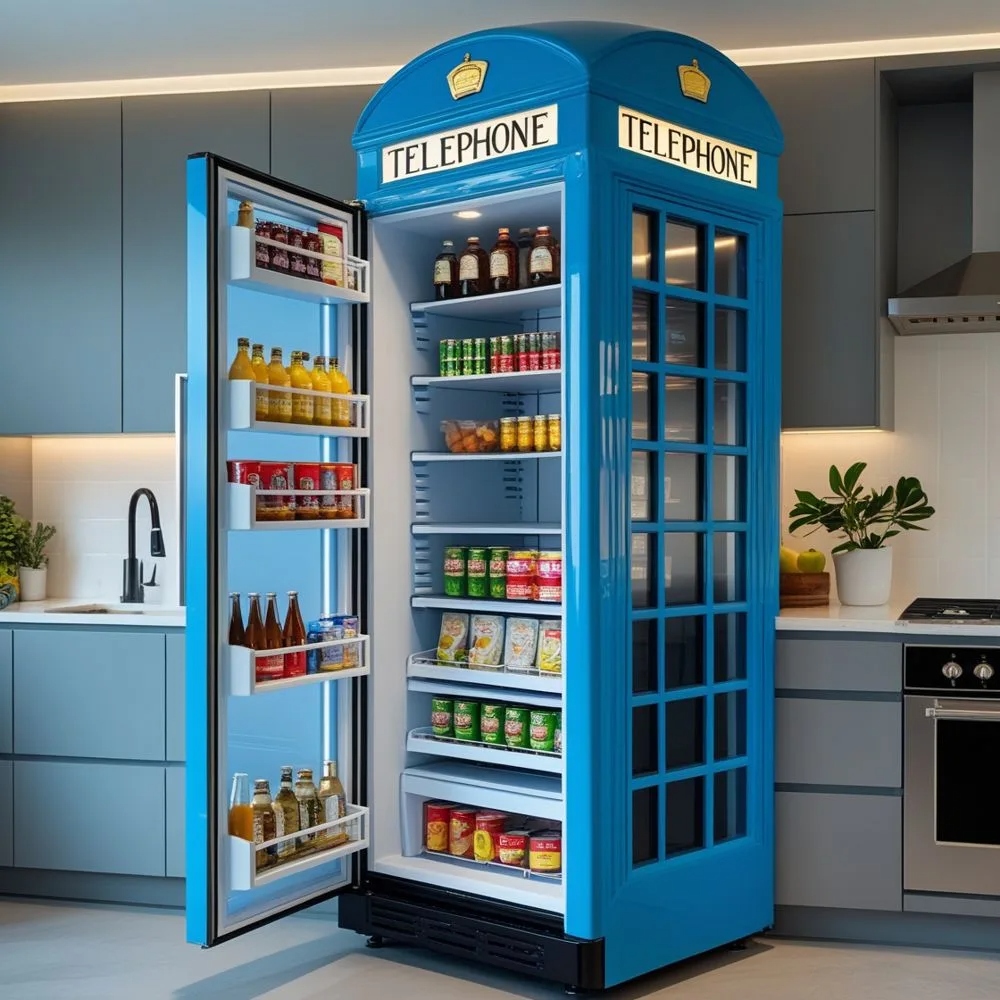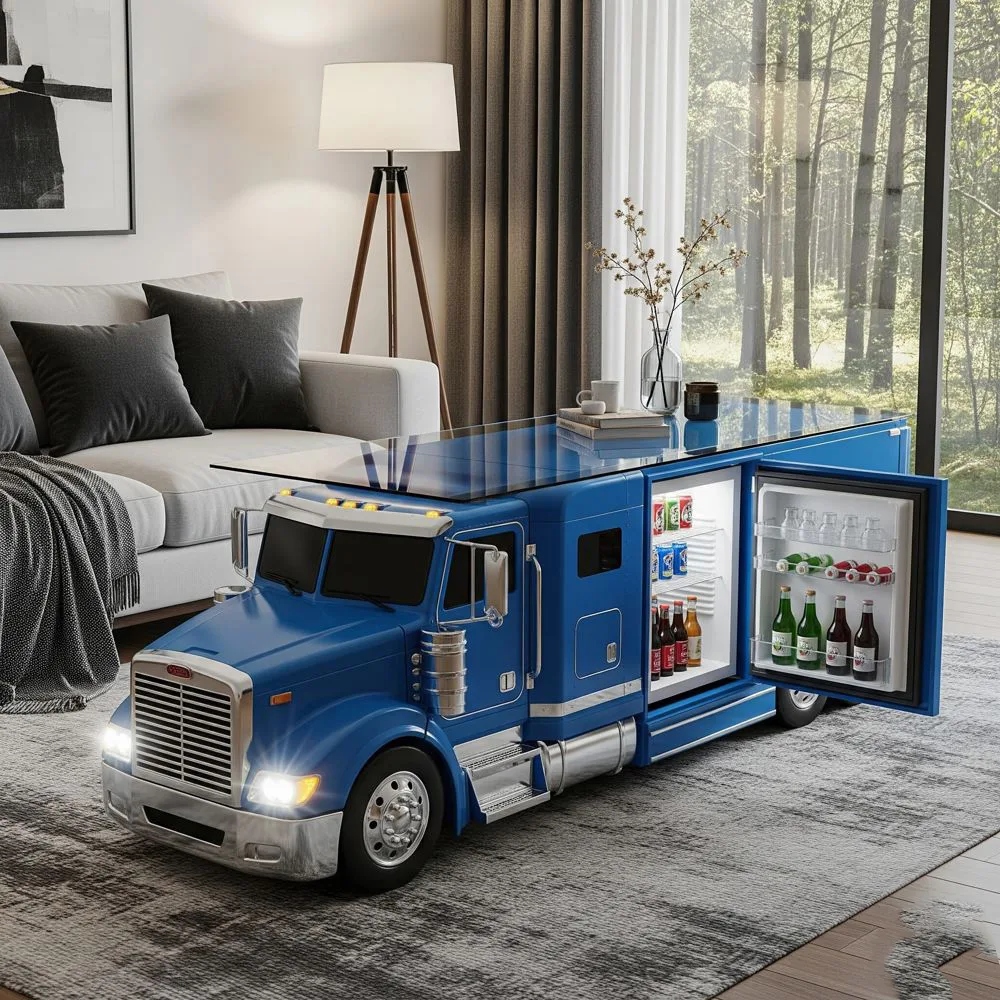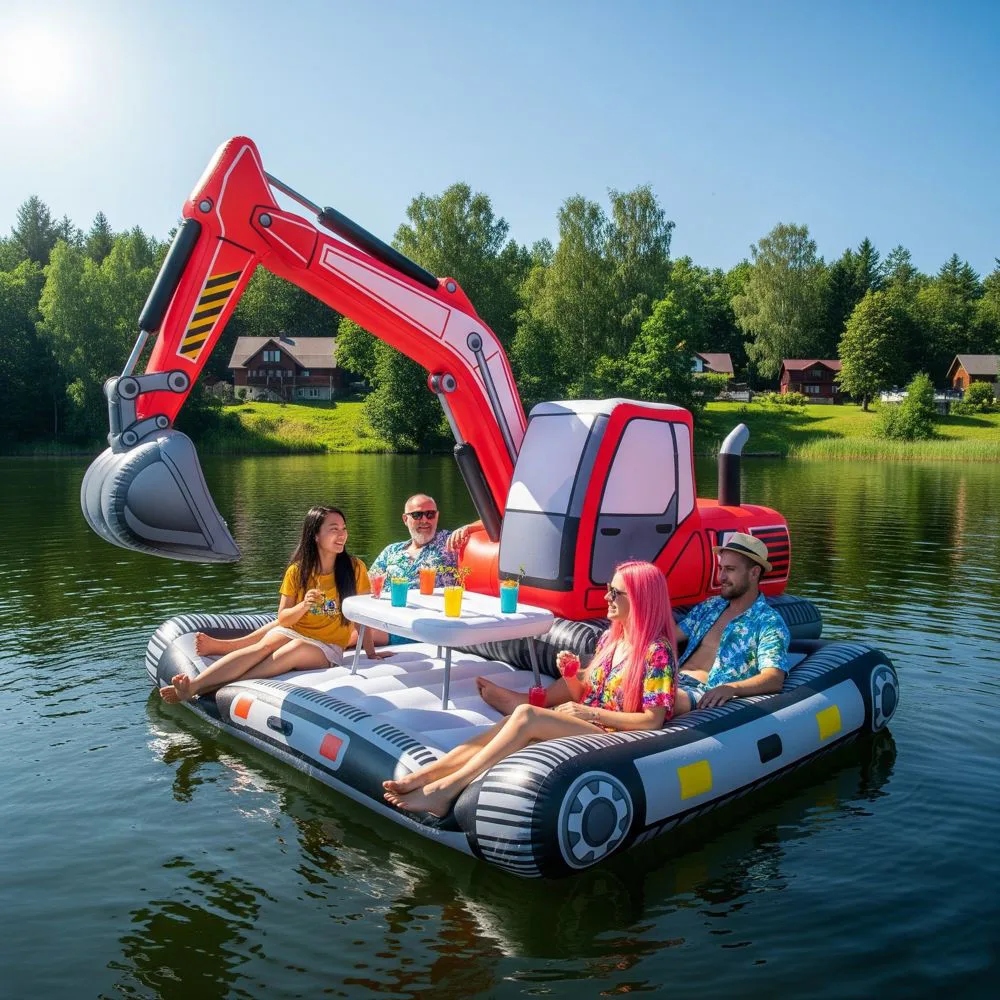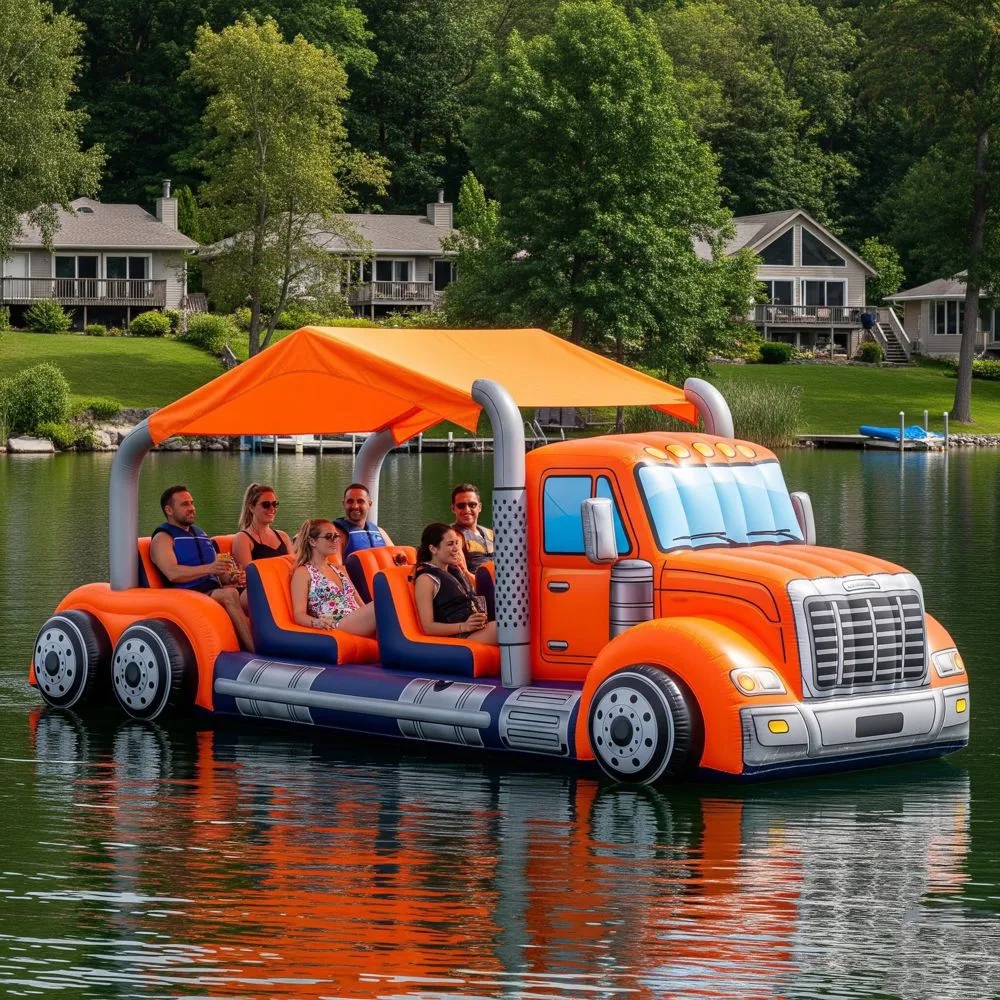Discover the perfect fusion of nature and design with a wood log aquarium kitchen. This innovative concept brings serenity and style into your living space, combining the tranquility of an aquarium with the warmth of natural wood. Imagine the calming presence of aquatic life seamlessly integrated into your daily culinary routines, creating a unique ambiance like no other.
Experience the harmonious blend of functionality and aesthetics as you explore the possibilities that a wood log aquarium kitchen can offer. Elevate your home environment with this captivating feature that adds a touch of sophistication while connecting you to nature in a refreshing way.

Benefits of Wood Logs in Aquariums
Natural Appeal
Wood log aquarium kitchens add a natural and rustic charm to the underwater environment. The earthy tones and textures of wood logs create a visually appealing setting for aquatic life, enhancing the overall aesthetics of the aquarium. The warm hues and organic shapes provide a soothing and calming atmosphere for both fish and observers.

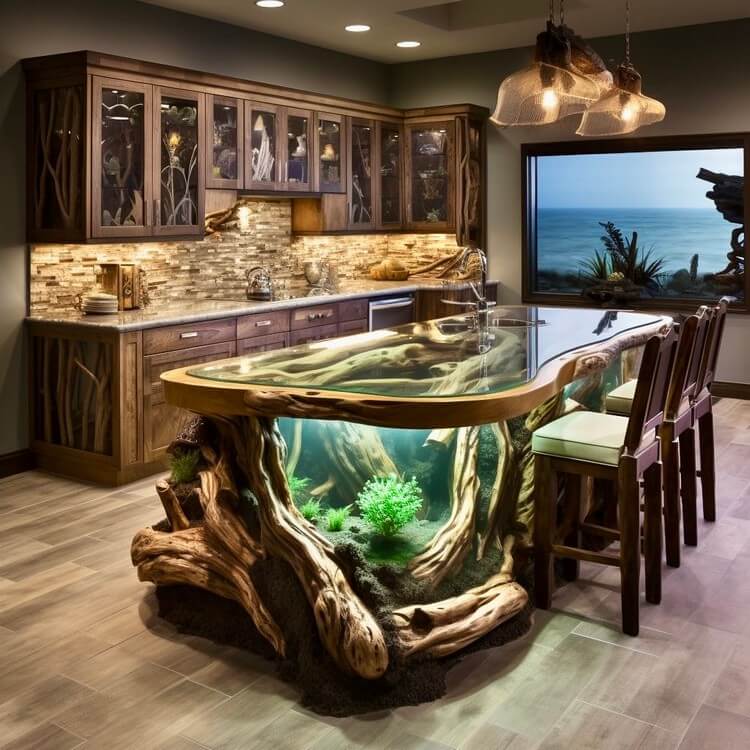
In an aquatic habitat, wood logs mimic the natural habitats where fish would seek shelter in the wild. They offer hiding spots for shy or territorial species, creating safe spaces for them to retreat when needed. Wood logs can serve as breeding grounds or nurseries for fish that prefer laying eggs on surfaces like wood rather than gravel or sand.
Behavioral Enrichment

The presence of wood logs in an aquarium encourages natural behaviors among fish by providing them with opportunities to explore, hide, rest, and establish territories. This enrichment reduces stress levels in fish by offering them a more stimulating environment that aligns with their instinctual needs. Fish may exhibit more vibrant colors, increased activity levels, and improved overall well-being when provided with such enriching elements.
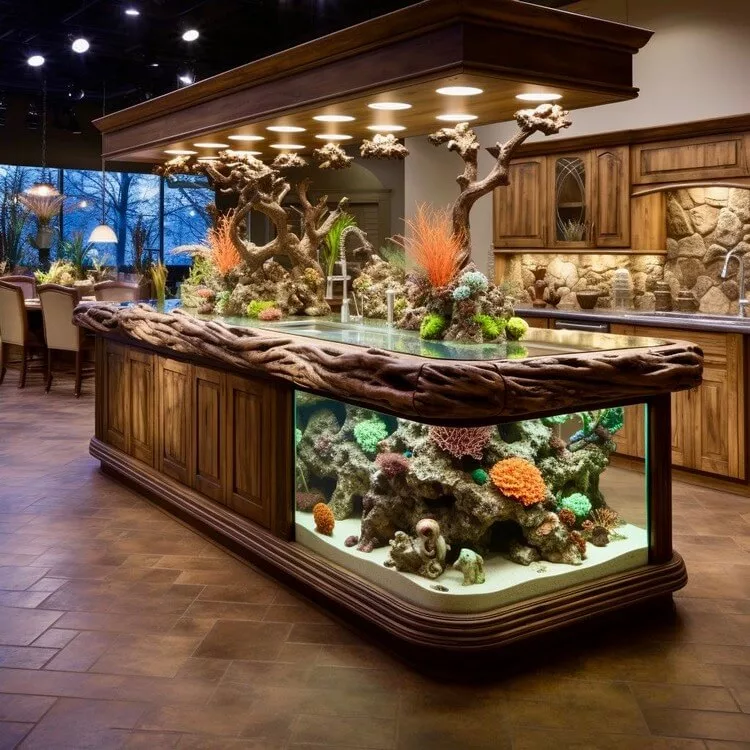
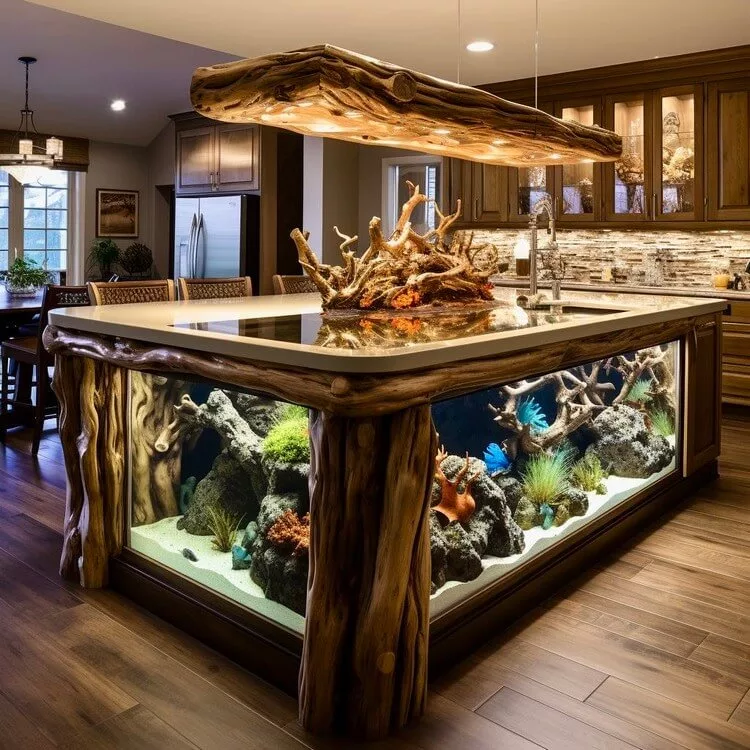

Selecting Quality Wood Logs for Aquatic Life
Hardwood Logs for Durability
When choosing wood logs for your aquarium, opt for hardwood varieties as they are less likely to rot compared to softwoods. Hardwoods like oak, maple, or beech are excellent choices due to their durability and resistance to water damage. These types of wood will hold up well in a moist environment without deteriorating quickly.



Selecting hardwood logs ensures longevity in your aquarium setup. The dense nature of hardwoods prevents them from breaking down easily when submerged in water, providing a stable and safe environment for aquatic life. These logs can withstand the constant moisture present in an aquarium without compromising their structural integrity.
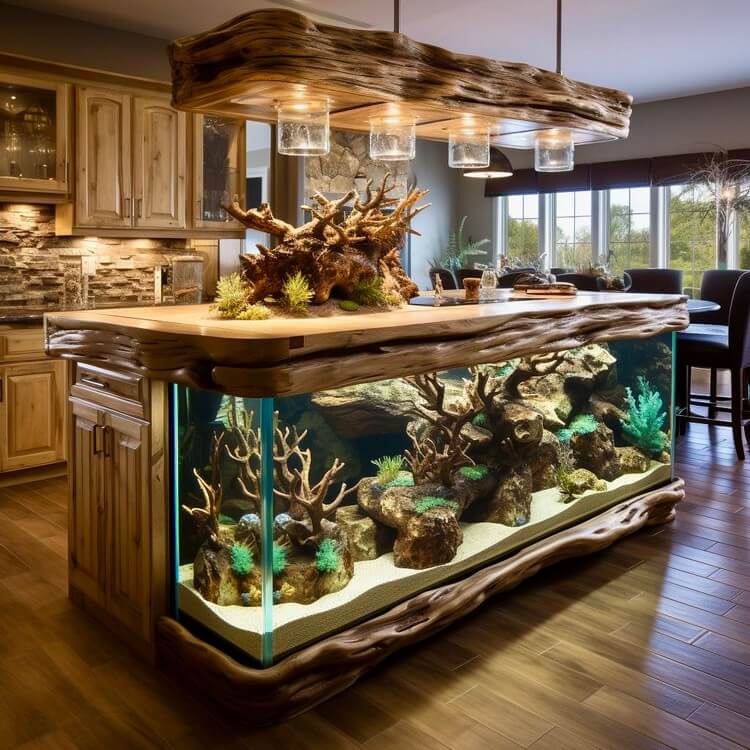
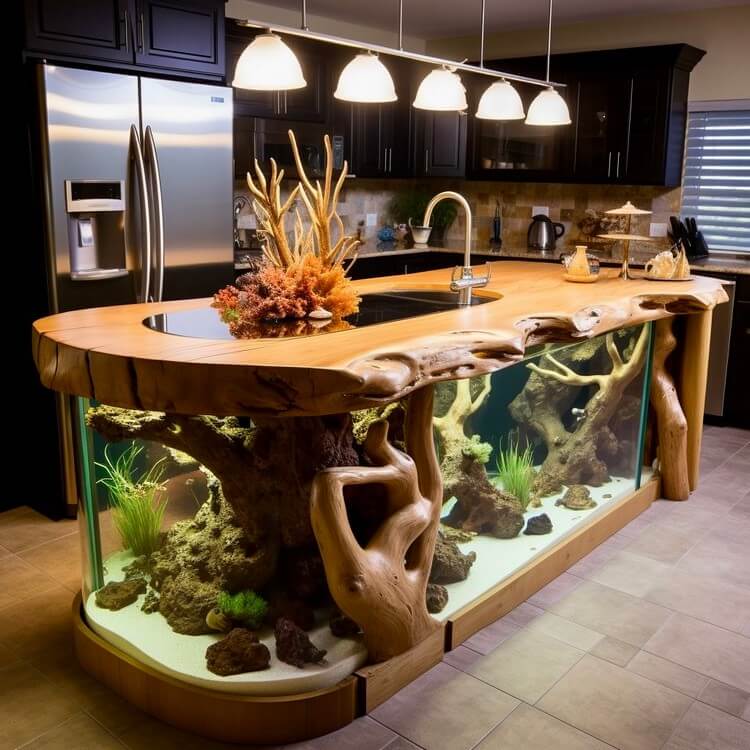
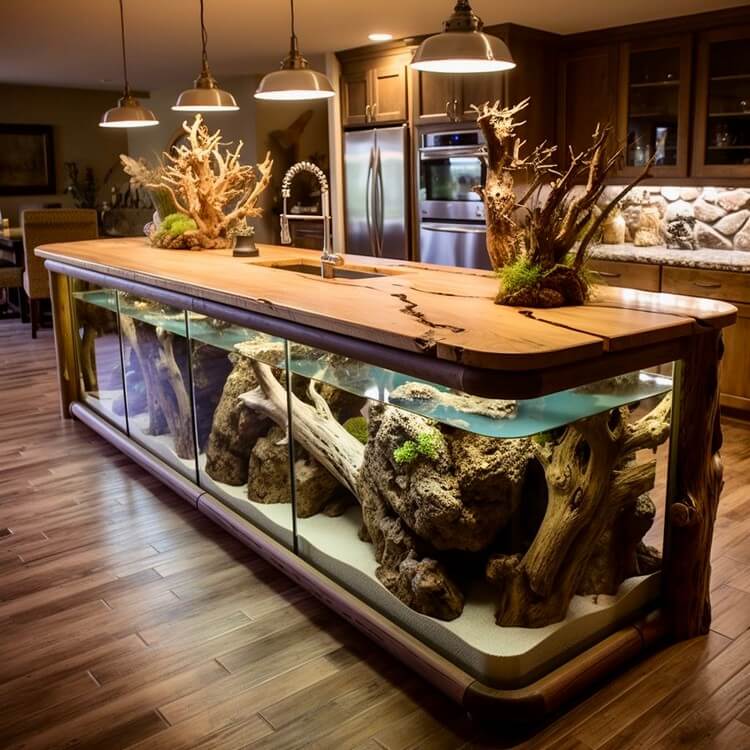
Avoid Chemically Treated Wood
It is crucial to steer clear of wood treated with chemicals or pesticides when selecting logs for your aquarium. Chemical treatments can leach harmful substances into the water, posing a threat to the health of fish and other aquatic organisms. Opting for untreated wood or pieces sourced from pesticide-free areas is essential to maintain a healthy aquatic ecosystem within your tank.
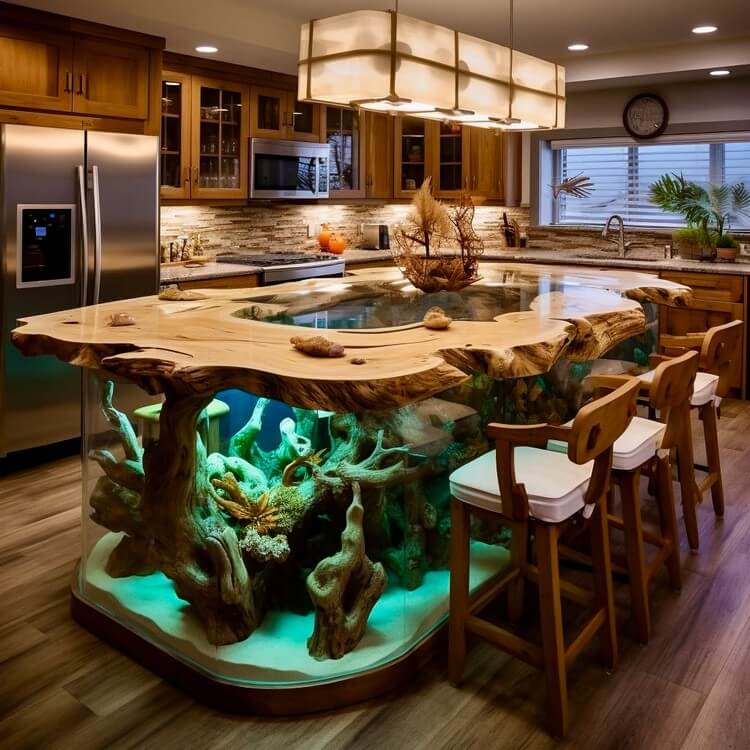
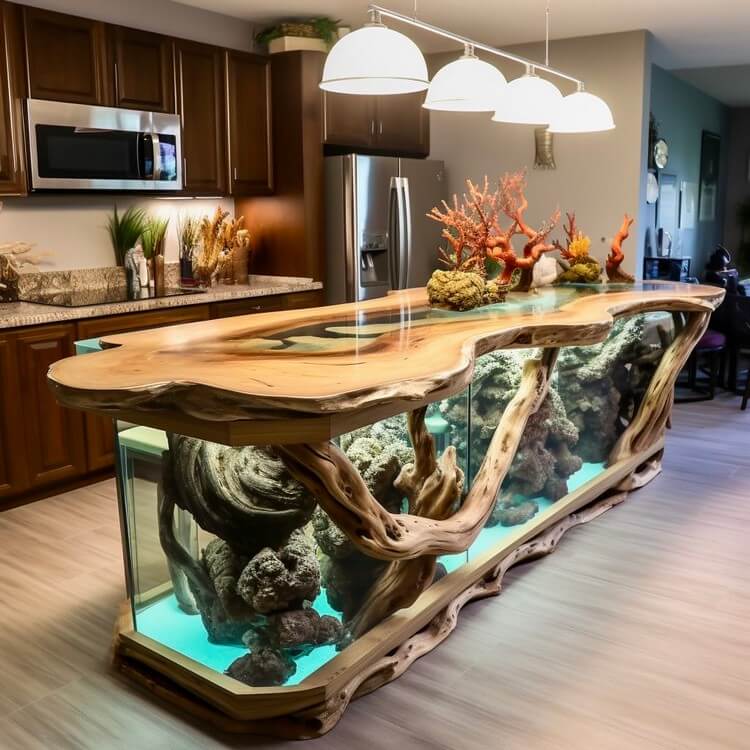

- Choose hardwood logs like oak or maple.
- Avoid chemically treated wood.
- Ensure durability by selecting dense hardwood varieties.
Incorporating Standing Tree Logs in Design
Create Focal Point
Enhance your aquarium kitchen by incorporating a tall standing wood log as a focal point. This can draw attention and add a natural element to the space. A large, sturdy log placed strategically can become an eye-catching centerpiece.
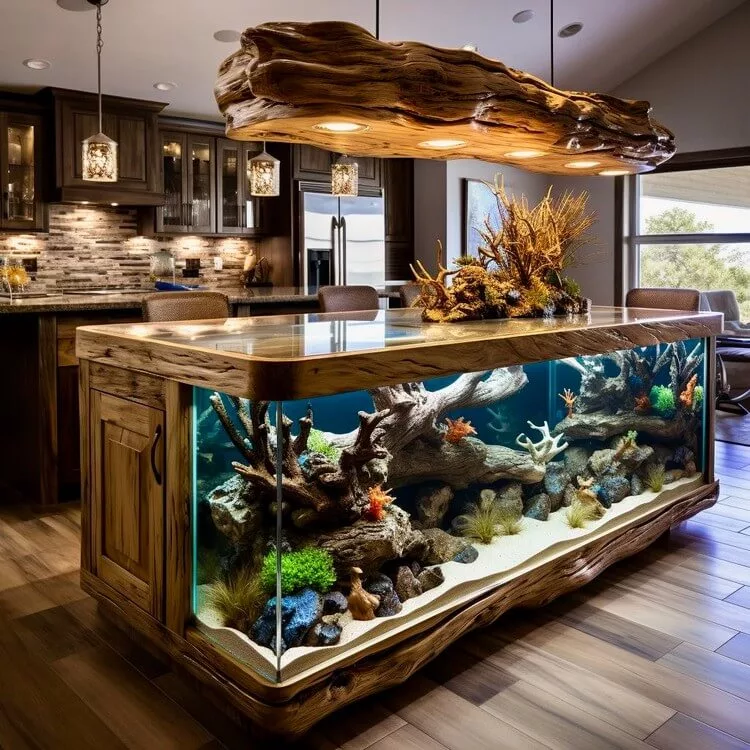
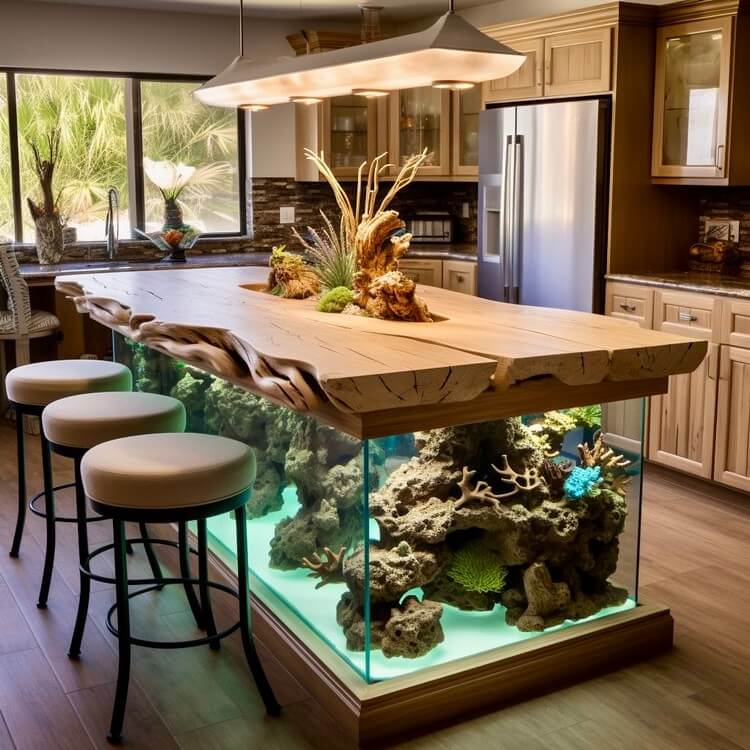
Logs can be used as dividers within the aquarium, creating distinct areas for different aquatic features or functions. By positioning logs vertically or horizontally, you can separate spaces while maintaining a cohesive design theme. For instance, you could use logs to partition off a feeding area from the main tank.

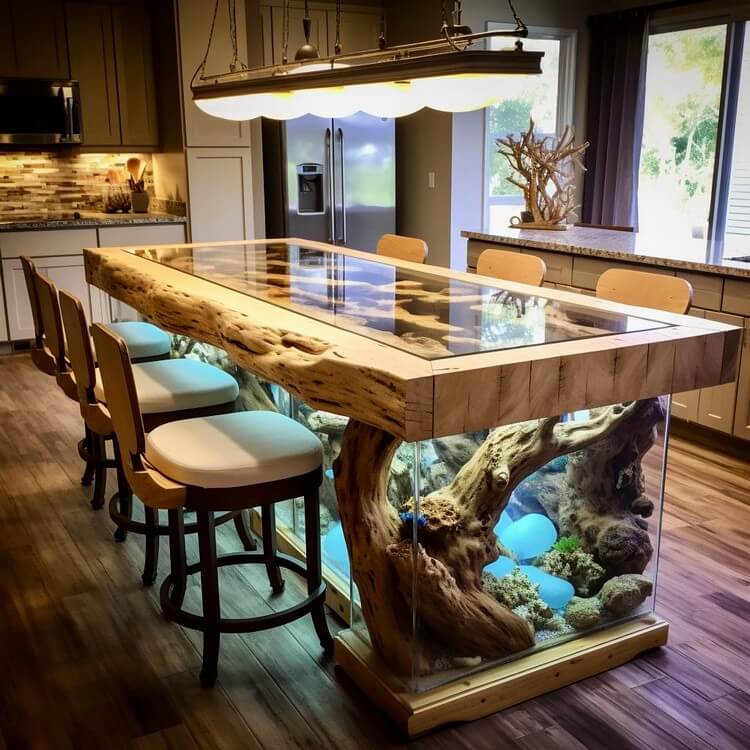

Visual Interest with Different Sizes
To elevate visual interest in your wood log aquarium, consider combining logs of various sizes and heights. Mixing up these elements adds depth and texture to the overall design. Smaller logs can complement larger ones, creating a dynamic and aesthetically pleasing arrangement.
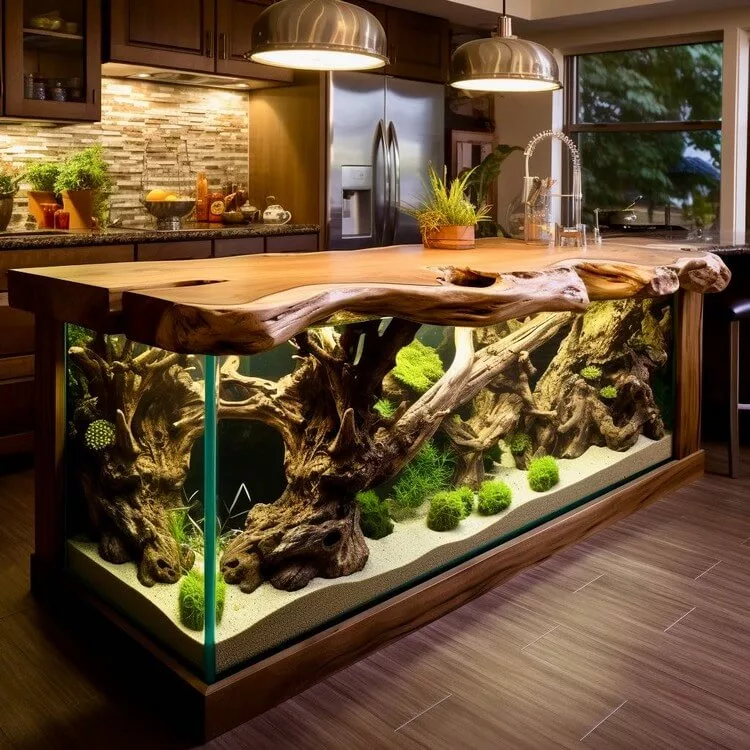
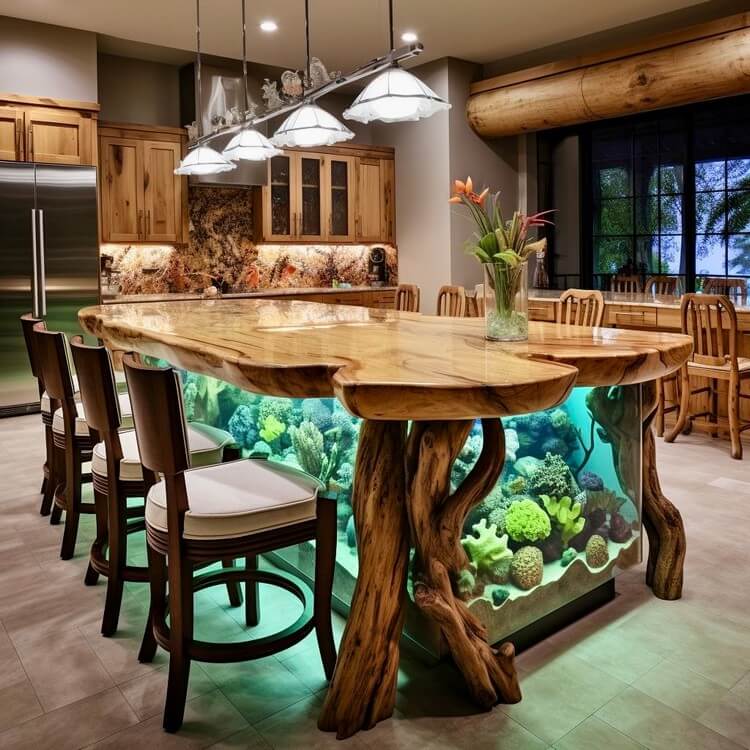
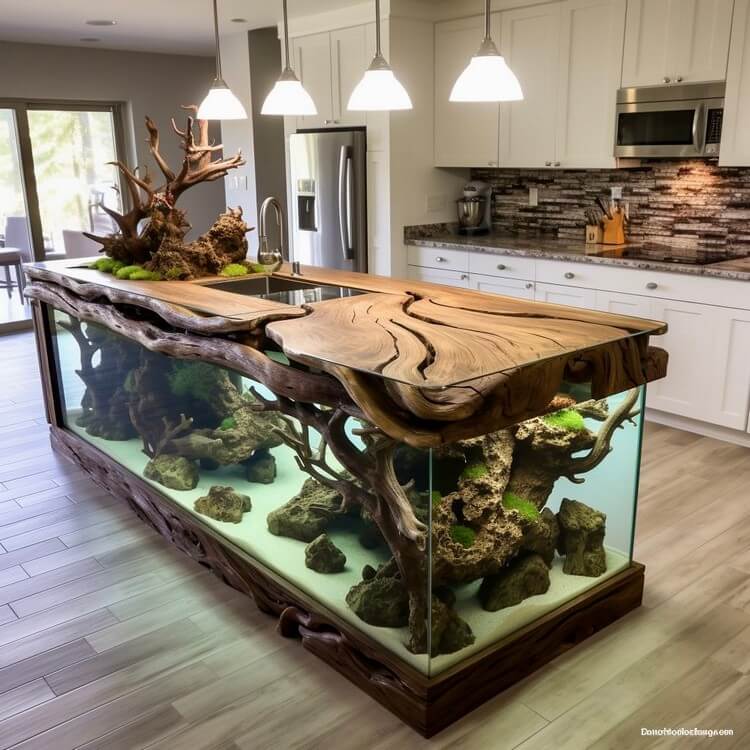
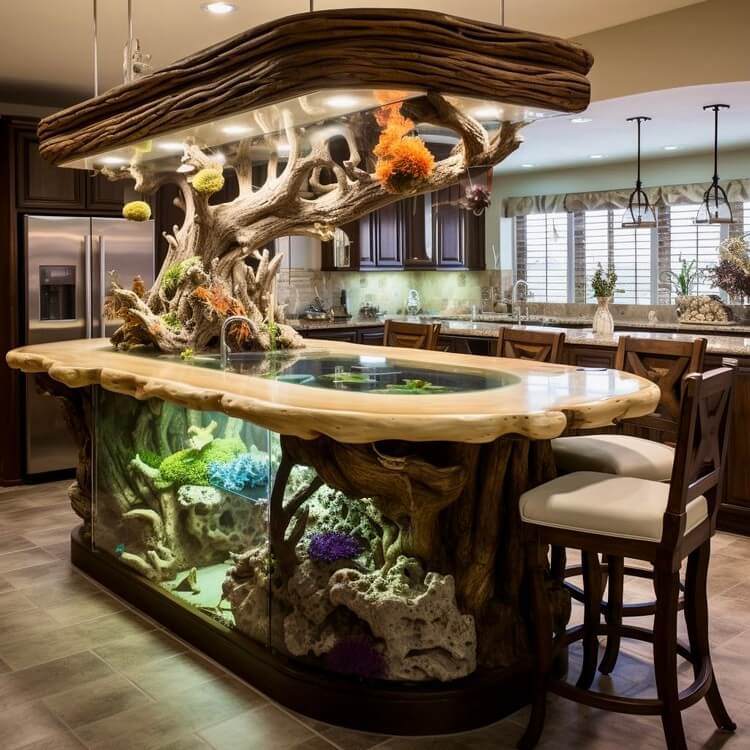
- Pros:
- Adds natural charm
- Creates visual appeal
- Cons:
- Requires maintenance to prevent decay
Incorporating standing tree logs into your aquarium kitchen design not only brings nature indoors but also allows for creative spatial arrangements that enhance both functionality and aesthetics.

Enhancing Aquascape with Driftwood
Unique Aesthetic Appeal
Driftwood offers a distinctive, weathered appearance to an aquarium, adding character and charm. It creates a natural underwater landscape that mimics the branches and roots found in aquatic environments. The aquarium transforms into a captivating focal point with the addition of carefully selected driftwood pieces.

Using driftwood, aquarists can craft intricate designs within the tank, providing shelter for fish and creating visually appealing structures. By strategically placing driftwood, hobbyists can simulate realistic underwater scenes that resemble natural habitats. This enhances the overall aesthetics of the aquarium while promoting a healthier environment for its inhabitants.
Read more: Stunning Wood Log Kitchen: The Epic Centerpiece Your Kitchen Needs
Design Cohesion
When selecting driftwood, it is crucial to consider how each piece complements the aquarium’s theme and design elements. Matching the wood’s color, texture, and shape to the existing decor ensures a cohesive look throughout the tank. By harmonizing different components such as gravel, plants, and driftwood, aquarists can achieve a balanced and visually pleasing aquascape.

- Pros:
- Adds unique aesthetic appeal
- Creates natural-looking branches and roots
- Enhances overall design cohesion
- Cons:
Importance of Hardscape Elements
Structural Support
Wood logs in an aquarium kitchen provide essential structure and stability, supporting the overall design. They create a natural look while offering support for other elements like plants.
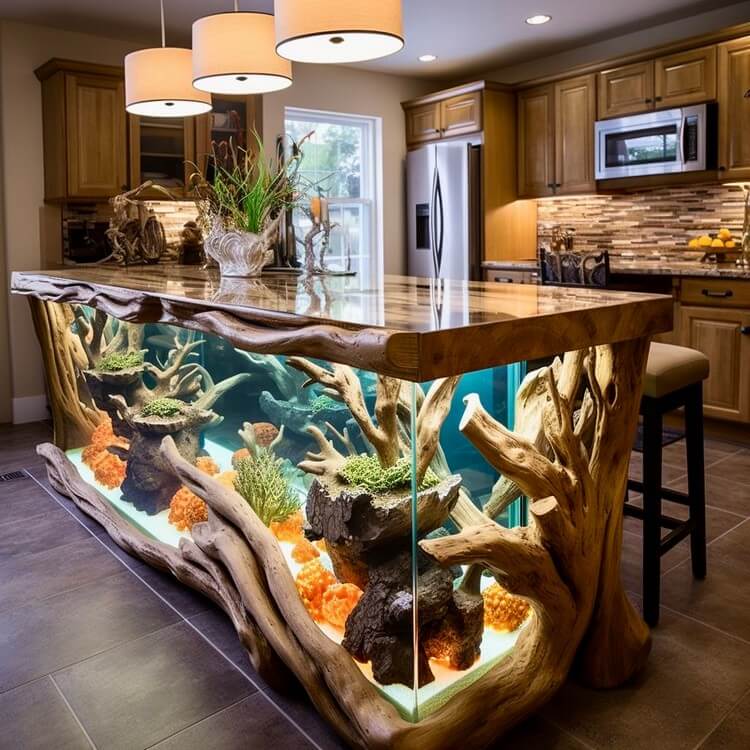
Aquarium owners often use wood logs to anchor plants securely in place within the tank. This anchoring helps prevent soil erosion by keeping the substrate intact.
Depth and Dimension
By incorporating wood logs, aquarists can introduce depth and dimension into their aquariums. The varying heights and textures of wood logs add visual interest, making the underwater environment more dynamic.
- Pros:
- Provides structural support
- Prevents erosion of substrate
- Adds depth and dimension to the aquarium
- Cons:
Creating a Natural Look with Logs and Driftwood
Strategic Arrangement
To achieve a natural look in an aquarium kitchen, strategically place wood logs and driftwood. Mimic real environments by positioning them thoughtfully within the tank. Create hiding spots for fish or accentuate certain areas.
Arranging wood elements can add depth to the aquarium, making it visually appealing. By placing driftwood vertically or horizontally, you can create caves or overhangs for fish to explore.
Diverse Appearance
Combining various types of wood like oak, maple, or cedar provides a diverse appearance mimicking nature’s complexity. Different textures and colors from various woods enhance the realism of your underwater landscape.
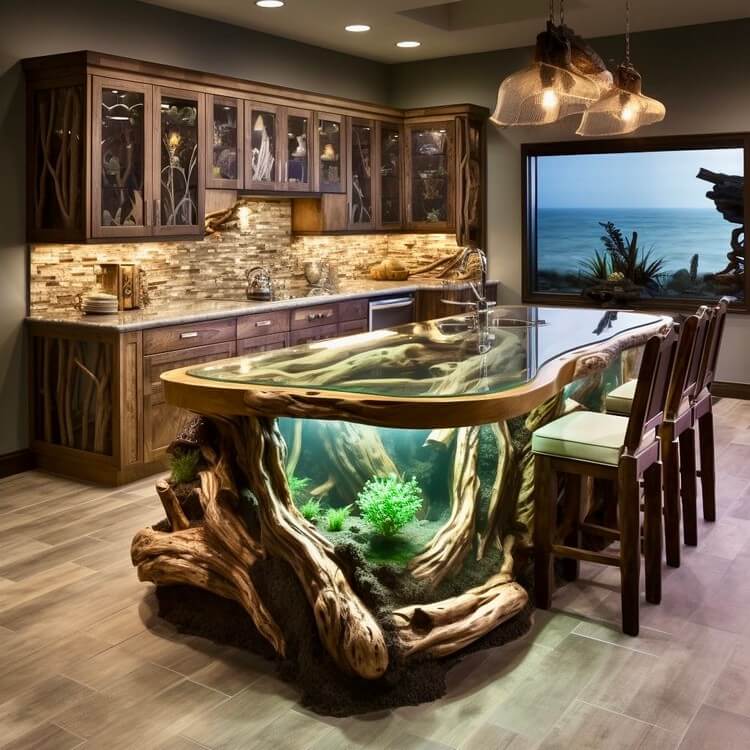
Tips for Arranging Aquarium Logs Visually
Placement for Depth Perception
When arranging wood log aquarium kitchen, consider placing larger logs towards the back. This creates a sense of depth in the tank, making it visually appealing. The larger logs act as a focal point and draw attention to the background.
- Larger logs at the back
- Creates depth perception
Dynamic Arrangements with Angles
For a more dynamic look in your wood log aquarium kitchen, try arranging the logs diagonally or horizontally. This adds movement and visual interest to the tank, making it engaging to look at from different angles.
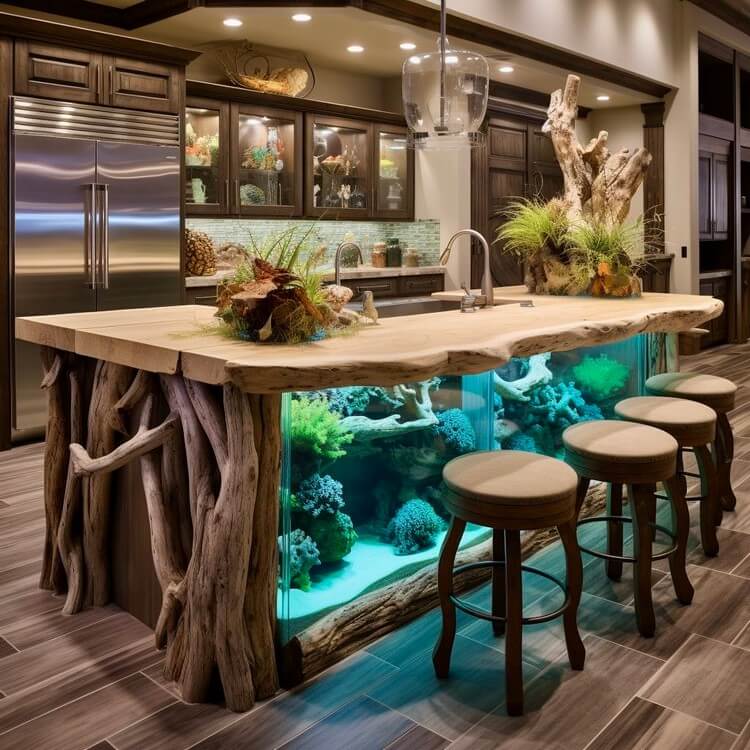
- Diagonal or horizontal arrangements
- Adds visual interest
Experimentation is key when setting up your wood log aquarium. Try out various angles and positions until you find an arrangement that suits your aesthetic preferences and complements the overall design of your tank.
- Experiment with different angles
Ensuring Health and Well-being with Wood Elements
Soaking Wood Logs and Driftwood
Wood logs and driftwood are common elements in aquariums, adding a natural look. Soak these items before placing them in the tank to remove tannins that can discolor the water. This process helps prevent any harm to aquatic life.
It is essential to monitor the water parameters regularly when using wood elements in an aquarium. Check pH levels and water hardness to ensure they are not adversely affected by the wood. Maintaining proper conditions will help promote a healthy environment for fish.
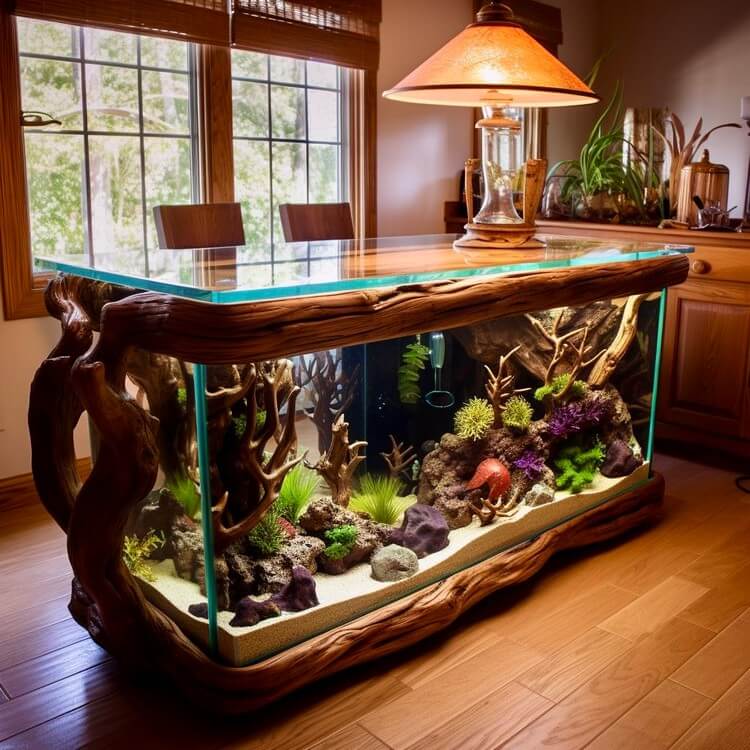
Replacing Deteriorating Wood Logs
If you notice your wood logs starting to deteriorate or showing signs of mold, it’s crucial to replace them promptly. Decaying wood can release harmful substances into the water, endangering aquatic life. Regularly inspecting wood elements will help maintain a safe habitat for your fish.
Incorporating wood logs and driftwood in aquariums can enhance the aesthetic appeal while providing a natural habitat for aquatic life. Selecting quality wood elements is crucial for maintaining the health and well-being of the underwater ecosystem. By carefully arranging these hardscape elements, aquarists can create visually stunning aquascapes that mimic natural environments.
To achieve a harmonious balance between design and functionality, individuals should pay attention to the details when integrating wood logs in their aquariums. Ensuring proper maintenance and monitoring the impact of wood elements on water quality are essential steps towards a successful aquascape. Remember, a thoughtful approach to incorporating wood elements can transform an ordinary aquarium into a captivating underwater landscape.
Frequently Asked Questions
What are the benefits of incorporating wood logs in aquariums?
Wood logs provide a natural aesthetic, serve as hiding spots for aquatic life, help maintain water quality by releasing beneficial tannins, and contribute to creating a more realistic underwater environment.
How can one select quality wood logs for their aquarium?
Choose dense, untreated hardwood logs that sink easily and do not release harmful substances. Look for pieces with interesting shapes and textures but avoid those with signs of decay or mold.
Is it advisable to use standing tree logs in an aquarium setup?
Standing tree logs can be used if properly prepared and secured to prevent floating. They offer a unique vertical element that enhances the aquascape design but require careful consideration to ensure stability and safety for aquatic inhabitants.
How does driftwood enhance the overall aesthetics of an aquarium?
Driftwood adds visual interest, texture, and natural beauty to an aquarium layout. It creates focal points, mimics natural habitats like riverbanks or forests, provides surfaces for algae growth (beneficial for some fish), and offers shelter areas for shy species.
Why is it important to include hardscape elements like wood in an aquascape design?
Hardscape elements such as wood provide structure, define spaces within the tank, create contrast against plants and fish colors, promote natural behaviors among aquatic creatures (like exploring or grazing), aid in establishing territories within the habitat.

